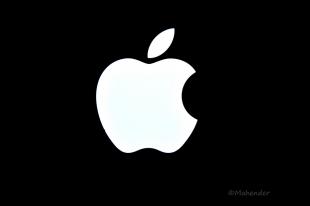Marketing Your eLearning Initiative - Branding


Let’s perform a quick exercise. What brands do you admire? Okay...hold those brand names in your head. Now, list three adjectives that come to mind when you think about those brands. Put your responses in the comments.
When I did this same exercise at a conference, many in the audience had thought of the same brands: Apple, Starbucks, Disney. The characteristics named included words like “innovative,” “visionary,” and “exciting.” As many of same brands and words came to mind for the group, it is clear these companies have worked hard to form these identities, carefully crafting their messaging and activities correlate with their desire to be associated with those words.
Now, what three adjectives come to mind when you think about your own elearning program?
A brand is a personality—it gives objects or ideas a tangible presence. Brand personality is why Apple customers wait for hours in line for the latest product or Starbucks patrons pay more for a cup of coffee. They either identify with or have a desire to be associated with the characteristics of that particular brand. If your company wants to encourage elearning usage, it is important to craft a strong brand identity employees want to be associated with.
Case Study: NBC Universal’s TalentLab
The exercise I used above was taken from NBC Universal’s presentation at the Learning 2013 conference. Previously known as “NBC Universal Learning and Development,” NBC chose to rebrand their training program to better display the company’s belief in the value of its employees.
The resulting rebrand, “Talent Lab,” was a conscious effort to associate the word “talent,” which is often used to refer to on-air personalities or celebrities, with employees to show NBC viewed them as important part of the bigger picture. The word “lab” was chosen to encourage collaboration and community and ingrain the idea that learning is always evolving.
Branding Exercises
Revisit the objectives, features and benefits exercise you completed in the first part of our series (If you haven’t done it yet, check it out!). Take a look at the features you listed and think about the emotions each feature may create in your employees. For example, if one of your features is that employees can choose their own courses, employees may feel you value their time and opinions. This feature may also give employee feelings of freedom. If one of your features is courses provide supplemental materials, your employees may feel more secure, as they will have a resource to help them use the learning on the job.
List these emotions and begin crafting messages that will encourage employees to feel this way about your elearning initiative. A program that wants to promote feelings of freedom and excitement around the training possibilities may refer to learners as “Pathfinders” and their program as “The [Company Name] Journey.”
In addition to determining what feelings and words you want to be associated with, it is just as important to think about what you DON’T WANT to be. Hearing adjectives you don’t want identified with your brand, can indicate your messaging isn’t working and might need tweaking. NBC Universal’s Talent Lab shared a very simple exercise they used to help determine the words they wanted and didn’t want associated with their training program.
- We are:
- Which includes:
- But not this:
For OpenSesame, this might look like:
- We are: The world’s largest source for elearning courses focused on employee training.
- Which includes: Flexibility, Simplicity, Quick, Affordable, Broad, Fresh
- But not: Stale, Outdated, Confusing, Expensive, Overwhelming, Boring
There are tons of great esources available around corporate and product branding that I’d suggest reviewing in addition to this post, such as Mashable or Inc.com. In our next post, we will start diving into specific tactics around marketing your elearning via email.
Image Credit: Mahender G via Flickr
Other posts in the Marketing Your eLearning Initiative Series:
Part 1 - Start With the Why
Part 2 - Finding Your Champions
Part 4 - Using Email to Market
Part 5 - Signage
Part 6 - Harnessing the Power of the Preview



